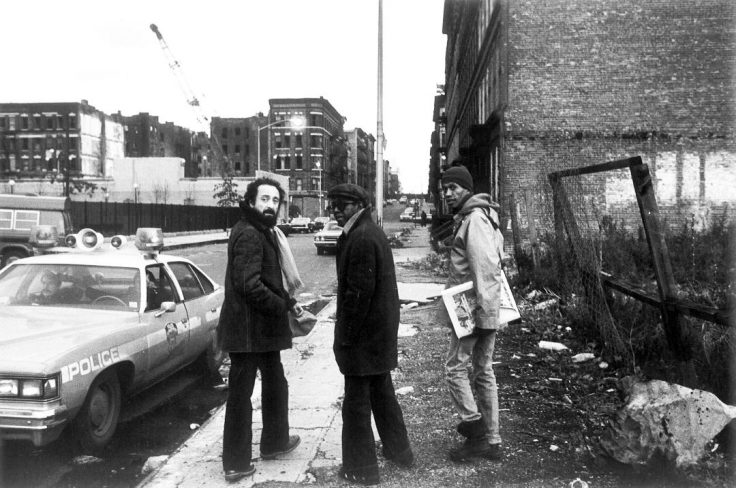The United States has a rich tradition of great literary surnames: Twain, Hemingway, Melville, Steinbeck—each is immediately recognizable, tied to a range of works that captured the zeitgeist of a particular historical moment. In our present cultural climate, where literature's power as an artistic force has dimmed, such names have become uncommon. Whitehead may be one of the few that carries equivalent power. It stands for elegant, unpretentious prose, and a preoccupation with themes of virtue and identity in an America that continues to wrestle with its complicated history of racial injustice. More than that, it usually comes attached to thoroughly enjoyable novels.
And crafting an entertaining romp appears to be Colson Whitehead's primary goal in Crook Manifesto, his latest book. This is a novel that offers all the ice-cool style of a vintage blaxploitation picture—it seems incomplete without a velvety soundtrack of Roy Ayers and Curtis Mayfield hits to accompany the action. The language is at once erudite and street-smart; it carries us through a crime caper that offers a vividly drawn setting and a roguish roster of characters. But as intense as the atmosphere may be, it often seems like an intentional distraction from deeper flaws in the narrative.
We follow Ray Carney, a former purveyor of stolen goods turned straitlaced furniture salesman. Carney first appeared in Harlem Shuffle, Whitehead's previous novel, which traced his efforts to build an honest business and a stable family in the early 1960s. The setting of a Harlem afflicted by rising crime, crumbling institutions, and mounting tensions over civil rights gave that story much of its life. Now, the '70s have arrived, urban decay has accelerated, and things are beginning to look a lot like Taxi Driver. Manhattan's once-glamorous streets are decorated with adult theaters, ruined buildings, and overflowing garbage bags. Against this backdrop, Carney is continuing to follow a righteous path. But when his daughter begs him for Jackson 5 tickets, he turns to an old associate for help, and quickly finds himself ensnared once again by the underworld he tried to escape. A cinematic series of double-crosses, brawls, and hustles ensues, as Carney's surroundings continue to deteriorate.
New York itself rivals Carney as the novel's primary focus, and Whitehead's depiction of its descent is arresting. He describes the Big Apple's rotting neighborhoods with an eye for the minor details of decline. The Upper East Side is defined not only by "half-finished graffiti on the metal grate of a closed-down drugstore" and "glass squares on the asphalt like knocked-out teeth," but by "a vague and unformed hopelessness instead of the standard entitled cheer" on the faces of its once-proud residents. Whitehead's grasp of the dirty and dispiriting never slips.
Much of contemporary punditry is concerned with the health of America's cities, and Whitehead's portrayal of New York's nadir is germane to a moment when crime rates are escalating and urban centers are struggling to return to their pre-COVID levels of vitality. He addresses such inescapable subjects as gentrification and racial division, but he eschews dogmatic social commentary. In one instance, a character rebukes "decades of urban renewal projects that obliterated communities" by "bulldozing so-called slums" and building highways that "the white people take advantage of." It's a useful reminder that many of the same contentious debates in today's urban politics were being waged a half-century ago, albeit with slight differences in language. But no character here is a mouthpiece, and Whitehead is far too sagacious of a writer to bludgeon his readers with an agenda. Issues are raised with nuance, and conclusions are for us to form.
Whitehead deploys perfectly crafted sentences and idiomatic turns of phrase without warning, often to hilarious effect. Many of these arise from Carney's internal monologue. He catches an acquaintance subjecting him to a "never-seen-a-Negro-like-you-before look," and plans to "feast upon" the complaints and grievances of prospective tenants in an apartment building "like they were a big bloody steak and potatoes." His attitude toward the Jackson 5 is especially droll—"He didn't know if they were sexually active, but they were certainly promiscuous, with sponsorship deals with no less than three breakfast cereals." On almost every page, Whitehead reaffirms the formidably inventive command of language that's earned him so many awards.
Where Crook Manifesto stumbles, however, is in its pacing. The plot unfolds at a lethargic speed, too many paragraphs are needlessly detailed, and the expository sections drift along far too slowly between moments of excitement. It's easy to become detached from what's happening in part because the characters offer little with which to connect—they seem more like vehicles for Whitehead's cultural tour of the time period than genuine human beings. Whitehead largely neglects their backgrounds and motivations, and at times it can be difficult to identify any memorable qualities among them besides a shared unpleasantness. So much attention is given to the descriptions of Harlem's steady unraveling that the neighborhood is a more emotionally compelling character than any of the actual people.
Crook Manifesto, then, is a stylish and original novel that can be challenging to engage with. Its portrayal of a suffering Harlem is stunningly detailed, and, taken as an evocation of 1970s New York, it's an enormous success. But there's a story beyond the time and place, and it's only sporadically engrossing. Whitehead is working on a third installment in Ray Carney's trilogy. Hopefully, it will address Crook Manifesto's shortcomings and end the series on a towering high.
Crook Manifesto: A Novel
by Colson Whitehead
Doubleday, 336 pp., $29
Guy Denton is a research assistant at the American Enterprise Institute.
